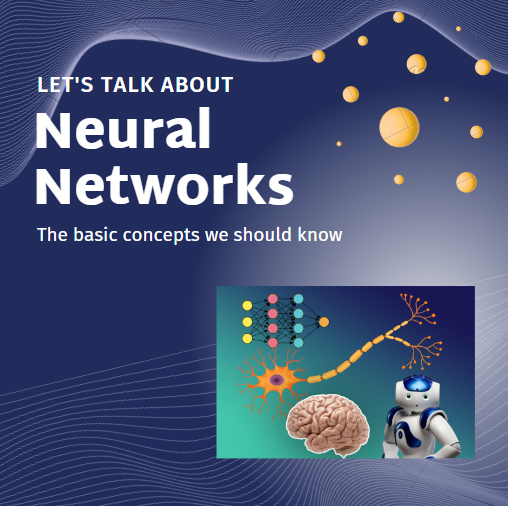Introduction to Neural Networks for Advanced Deep Learning (Part 1).

In tech, we always look for a mission and that is the real war, facing challenges, and striving for success. As the summer break begins for many Tanzanian university students, congratulations to those who have completed their exams! moreover, to those who have done with their endeavors. Now, as we move forward and apply what we've learned, let's make this summer break productive and meaningful together. It's been a while since my last blog post, and the reason is schooling which has been both tough and fun. But now, let's get back and make our conversations productive.
If you're reading this blog, I'm confident that the term "deep learning" is not new to you. Personally, Being a fan of AI systems, and my inspiration has been around understanding the difference between artificial and human intelligence. I consider it a personal mission to discover the truth that lies behind these AI systems and how they relate to the workings of the human brain to solve human problems. In my view, it's a bridge to the gap in our understanding between these systems and our own brain abilities. So, today, let's have a journey to explore one fundamental concept: NEURAL NETWORKS.
In the next few blog posts, we will have a hands-on project to work on the practice of neural networks through practical projects. Whether you're a coder, developer, or simply an enthusiast eager to dive into the world of deep learning, Trust me that neural networks are worth learning. Together, we'll dive into the inner workings of these AI models, understand their potential applications, and see how they can amplify our capabilities in solving our own problems. Let's get started on this beautiful exploration of neural networks, discovering the beauty they have. I'm happy to share this knowledge with you, and I hope it will speak to your passion for the world of AI and deep learning.
NEURONS IN THE HUMAN BRAIN:

We learned in human biology since we are in primary school, neurons are the parts of the cells that play a crucial role in transmitting information and enabling communication within the brain and nervous system. Neurons are known to be the building blocks of the brain due to their critical function in processing and transmitting signals.
Neuron Structure: The structure may seem like tiny cells, but their structure is incredible and more complex. They consist of three main components:
Cell Body (Soma): The cell body acts as the core of the neuron, containing the nucleus, which contains the genetic information of the cell. It has a role in maintaining the neuron's overall health and functioning.
Dendrites: These are tree-like extensions branching out from the cell body. These structures are equipped with receptors that receive incoming signals from nearby neurons or sensory receptors in the body.
Axon: This is an elongated-like structure that carries nerve impulses away from the cell body. Covered in a fatty, insulating layer called myelin, the axon speeds up the transmission of signals.
How Neurons Work:
The operation of neurons can be understandable as many networks of interconnected electrical circuits. When a neuron receives signals from its dendrites, it integrates this incoming information. If the overall input reaches a certain threshold, the neuron generates an electrical impulse, often referred to as an action potential, along its axon.
This action potential travels along the axon, guided by the myelin until it reaches the terminal branches, which are close to the next neuron's dendrites. At the synapse which is the junction between two neurons, the electrical signal is converted into a chemical signal. Neurotransmitters, which are chemical messengers, are released into the synapse and bind to receptors on the dendrites of the neighboring neuron.
The binding of neurotransmitters to receptors alters the electrical charge of the receiving neuron. If the total signal received is strong enough, it triggers a new action potential in the neighboring neuron. This process of signal transmission repeats through the complex web of interconnected neurons, creating a pathway of information flow within the brain.
Neural Networks and Learning:
The brain's true power lies in the large amount of its neural networks. Neurons form connections with thousands of other neurons, creating an incredibly complex network. Through experience and learning, the strength of connections between neurons can change, allowing the brain to adapt, form memories, and learn from its environment.
These dynamic connections between neurons give us the ability to understand the world, learn new skills, and make decisions. By studying the structure and function of neurons, neuroscientists gain insight into the inner workings of the human brain, this gives an understanding of the secrets of cognition, emotions, and consciousness.
Simply, neurons are the most important cells that serve as the foundation of the human brain's network. Through the transmission of electrical and chemical signals, these neurons process and relay information, allowing us to learn and navigate the world around us. The study of neurons and their interconnected networks continues to be a fascinating journey into the depths of human intelligence.
To understand in-depth how neurons work have a look at this youtube video HERE.
HUMAN NEURONS vs COMPUTER NEURONS.
The concept of interconnection between human brain neural networks and neural networks in computers brings us to the heart of the field of artificial neural networks (ANNs) and artificial intelligence (AI) in general. These two systems are different in their biological nature and construction, researchers and engineers have drawn inspiration from the human brain's neural networks to design and develop artificial neural networks in computers.
Human Brain Neural Networks:
The human brain is consisting of billions of neurons interconnected through synapses. These neurons form complex networks that are responsible for processing information, controlling bodily functions, and enabling various cognitive abilities. The brain's neural networks are highly adaptive, and through learning and experience, they can understand their connections to strengthen certain pathways and weaken others, leading to learning and memory formation.
Neural Networks in Computers:
In its parallelism, artificial neural networks in computers are a product of the human brain's nature. These artificial neural networks are mathematical models composed of layers of interconnected artificial neurons. Each neuron computes a weighted sum of its inputs, applies an activation function, and passes the result to the next layer of neurons.
While artificial neural networks lack the biological complexity of the human brain, they process vast amounts of data in parallel, making them powerful tools for pattern recognition, classification, regression, and other machine-learning tasks. These networks can learn from data and improve their performance over time, a process known as training or learning.
Interconnection between Human and Artificial Neural Networks:
The interconnection between human brain neural networks and artificial neural networks lies in the inspiration that artificial neural networks draw from the brain's design and function. The concept of using interconnected layers of artificial neurons to process information and learn from data was inspired by the human brain's neural networks. For example:
- Architecture: The layered structure of artificial neural networks, with input, hidden, and output layers, is the same as the organization of neurons in the brain.
- Learning and Adaptation: While artificial neural networks do not possess the brain's biological nature, they can learn from data through optimization algorithms, adjusting their parameters (weights and biases) to improve performance, much like the brain adapts through synaptic plasticity.
- Parallel Processing: Artificial neural networks leverage the parallel processing capabilities of computers, enabling efficient computation on large datasets.
With that all applied, despite these similarities in inspiration, artificial neural networks are only a simplified concept of the brain's neural networks. While they have proven to be powerful tools in solving various tasks, they are still far from the complex cognitive abilities of the human brain. The field of artificial intelligence continues to grow, and research in neural networks stands to bridge the gap between artificial and biological intelligence.
WHAT MACHINE LEARNING PROBLEMS TO SOLVE USING NEURAL NETWORKS.
Neural networks can be applied to many types of machine-learning problems. Some of them are as follows:
- Classification Problems: Neural networks can be used for classification tasks, where the goal is to categorize input data into one of several predefined classes. Examples include image classification (identifying objects in images) or sentiment analysis of a text.
- Regression Problems: Neural networks can handle regression tasks, where the objective is to predict continuous numerical values. For instance, they can be used to predict housing prices based on features like location and size.
- Object Detection and Localization: Neural networks, especially convolutional neural networks (CNNs), are also used for object detection and localization tasks. They can identify and locate multiple objects in an image or video stream, commonly used in applications like autonomous vehicles and facial recognition.
- Natural Language Processing (NLP): Recurrent Neural Networks (RNNs) and Transformers are often used for NLP tasks, such as machine translation, text generation, and named entity recognition(NER).
- Reinforcement Learning: Neural networks are also employed in reinforcement learning setups, where an agent learns to make decisions by interacting with an environment. Deep Q Networks (DQNs) and Deep Deterministic Policy Gradients (DDPG) are examples of neural network architectures used in reinforcement learning.
- Generative Models: Generative models, such as Generative Adversarial Networks (GANs) and Variational Autoencoders (VAEs), use neural networks to generate new data samples that resemble the training data distribution. GANs, for instance, can create realistic images, while VAEs can generate novel faces or other data samples.
The power of neural networks makes them a powerful tool in the field of machine learning, above mentioned problems are just very few of them.
Personally, I saw this as very important first getting to understand first what are these neural networks from human perspectives and computers nature. If it may be hard for us to understand at first take some of the complex terms into consideration and let us meet in the next part to see only Neural Networks architecture and the most common parts that we should take into consideration.
For a chat and other conversation let's have here: Mgasa Lucas
Until next time Bye Bye.
Recommended references: YOUTUBE
